
Cuisine
Iranian cuisine
Iranian cuisine is characterized by its use of saffron, turmeric, cinnamon, and other spices, as well as a variety of fruits, vegetables, and meats. Many dishes are also served with rice, which is a staple in Iranian cuisine.
Typical ingredients
Saffron, Turmeric, Cinnamon, Cardamom, Rosewater, Lamb, Chicken, Beef, Eggplant, Tomatoes, Cucumbers, Pomegranates, Dates, Figs, Pistachios
Presentation and garnishing
Dishes are often presented in large communal platters and garnished with fresh herbs and pomegranate seeds.
Iran is also known for its tea culture, with tea being served alongside meals and as a social activity.
More cuisines from this region...
History
Iranian cuisine has a long history dating back to ancient Persia. The country's location on the Silk Road made it a hub for trade and cultural exchange, which influenced its cuisine. Over time, Iranian cuisine has evolved to include a wide variety of dishes, each with its own unique flavor and preparation method.
Cultural significance
Food is an important part of Iranian culture and is often served in large portions to show hospitality. Many traditional Iranian dishes are also associated with religious holidays and celebrations.
Health benefits and considerations
Iranian cuisine is generally considered healthy, as it emphasizes fresh ingredients and a variety of fruits and vegetables. However, some traditional dishes may be high in calories and fat.
Iranian cuisine dishes Browse all »
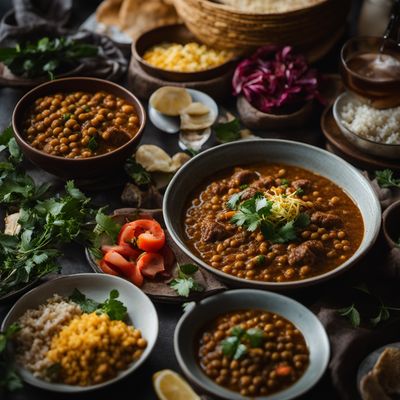
Ghameh
Ghameh is a Persian dish that is made with lamb or beef and split peas. It is a hearty and flavorful dish that is perfect for a cold winter day.
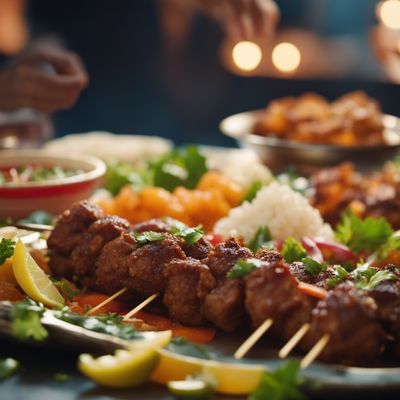
Kabab torsh
Sour kebab
Kabab torsh is a traditional Iranian dish that is typically served as a main course. The dish consists of marinated beef or lamb that is grilled or roasted, and is known for...
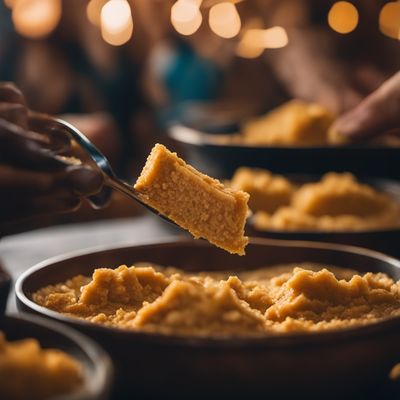
Tar halva
Tar halva is a traditional dessert from Azerbaijan and Iran made from flour, butter, sugar, and tar syrup. It has a unique smoky flavor and a chewy texture.
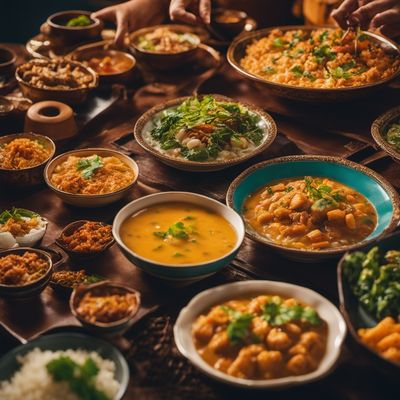
Nan-e sangak
Nan-e Sangak
Nan-e sangak is a traditional Iranian flatbread that is made with whole wheat flour and baked on hot pebbles. It has a unique texture and flavor that is perfect for dipping in...
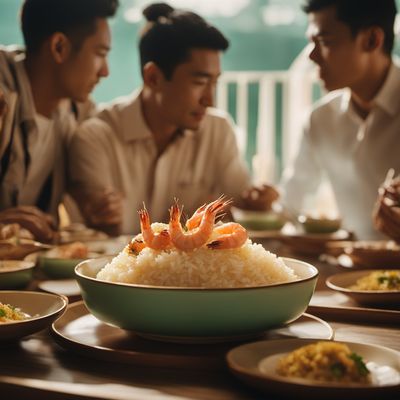
Meygoo polo
Shrimp rice
Meygoo polo is a traditional Iranian dish that is made with saffron rice and shrimp. It is a popular dish in Iran and is often served during special occasions and festivals.

Haft mewa
Haft mewa is a traditional Afghan dish that is typically served during special occasions such as weddings and religious holidays. The name "haft mewa" translates to "seven...

Kuku gerdu
Persian walnut omelette
Kuku gerdu is a Persian herb omelette that is made with fresh herbs and spices. It is a flavorful and healthy dish that is perfect for breakfast or lunch.

Khoresh gheimeh
Khoresh gheimeh is a traditional Persian stew made with lamb, split peas, and dried limes. It is a hearty and flavorful dish that is perfect for cold weather.
Iranian cuisine recipes Browse all »
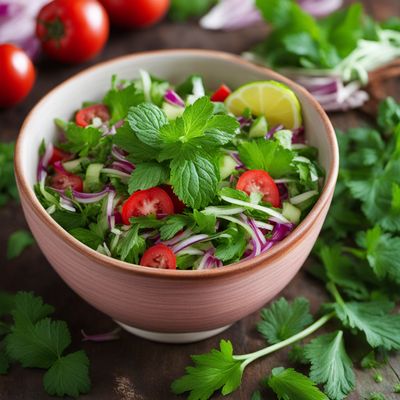
Shirazi Salad Recipe
Refreshing Persian Cucumber and Tomato Salad
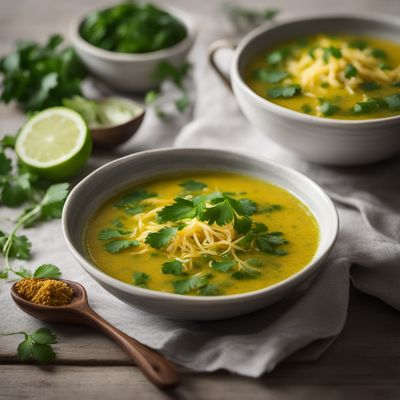
Eshkeneh - Iranian Herb and Egg Soup
Savory Delight: A Taste of Iranian Herb and Egg Soup

Zereshk Polow with Chicken
Golden Saffron Rice with Tangy Barberries and Tender Chicken
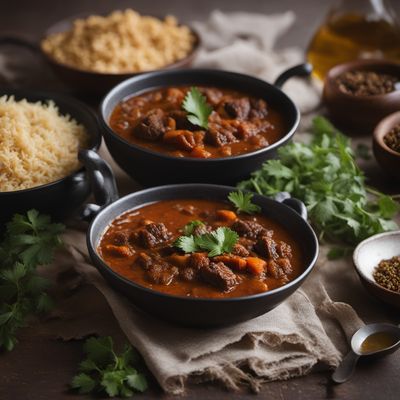
Veldt-inspired Spiced Lamb Stew with Persian Flavors
Persian Lamb Stew: A Fusion of South African and Iranian Delights

Khoresh Karafs with Persian Herbs and Lamb
Herb-Infused Lamb Stew: A Taste of Persian Delight
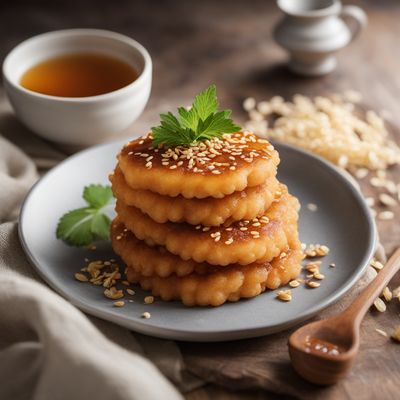
Iranian Honey Rice Cakes
Sweet Delights: Iranian Honey Rice Cakes
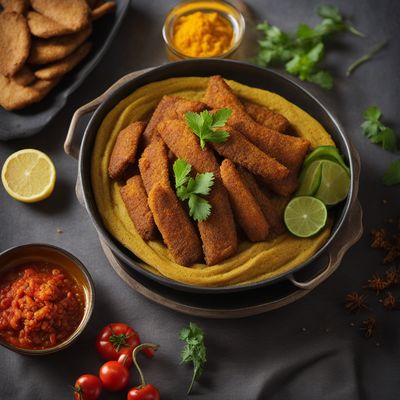
Iranian-style Fried Herring
Saffron-infused Fried Herring with Persian Spices

Carrot Halva Delight
Golden Carrot Delight: A Sweet Symphony of Iranian Flavors

Iranian-style Spicy Shark Stew
Saffron-infused Shark Delight: A Spicy Iranian Stew

Kolcheh Nowrozi - Persian New Year Cookies
Delightful Blossoms - Persian New Year Cookies

Gheymeh Nesar - Persian Saffron Meat Stew
Golden Delight: A Flavorful Journey into Persian Cuisine
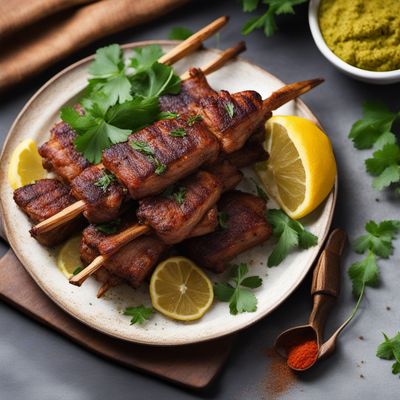
Grilled Persian Delight
Saffron-infused Grilled Chicken and Lamb Skewers